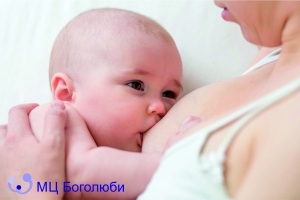The question of paramount importance, which is asked by many women after childbirth, is the establishment of a monthly cycle. The first menstruation in non- breastfeeding women usually occurs five or six weeks after the birth of the baby. In young breastfeeding mothers, the recurrence of menstruation is delayed for constitutional reasons or due to ongoing hormonal changes.
The resumption of menstruation usually indicates that the reproductive system has returned to normal, however, a "reset" of fertility can occur even before the onset of menstruation. Therefore, if a new pregnancy is not yet in the plans, it is shown to resort to contraceptive measures, regardless of the reappearance or absence of menstrual flow.
Often the cycle is restored as soon as the mother begins to wean the baby from the breast. With a decrease in the number of feedings, the synthesis of prolactin decreases, which, in addition to being a hormone responsible for milk production, suppresses ovulation. It may take some time to resume ovulatory activity, so the first cycles after childbirth are anovulatory .
The postpartum period is the period after the completion of childbirth, which lasts about 45 days or 6 to 8 weeks after the birth of the child. During this period, the uterus returns to its original size, and the birth canal restores its pre- pregnancy shape. The clinical manifestations of the postpartum period as a whole reflect the regression of the physiological changes that took place during pregnancy. These changes are minor and temporary and should not be confused with pathological conditions.
When does it happen?
As a rule, in women who exclusively breastfeed, the resumption of menstruation is delayed due to high levels of prolactin. The level of suppression of the ovulatory cycle may vary in each woman and depends on the child's appetite. The less often the baby suckles the breast, the higher the likelihood that ovulation and menstruation will soon occur.
How does this happen?
The first menses after childbirth are usually heavy, as the endometrium is thickened after many months of amenorrhea. For this reason, there are many clots in the menstrual flow, and they last a little longer than normal - 8-10 days. Before the cycle returns to its normal characteristics, it should take several months. This period is necessary for the resumption of normal ovulatory activity. Therefore, it's okay if the first menstruation after the birth of a child is irregular. The second cycle after childbirth can occur after two months or occur at shorter intervals.
Difference between lochia and menstruation
Lochia is the loss of blood, serum, and remnants of the decidua (the tissue that lines the inside of the uterus during pregnancy) that occurs shortly after the baby is born. They should not be confused with menstruation.
Lochia does not actually lead to a stable menstrual cycle, as it occurs only once for a short and limited time. In the first week after childbirth, discharge similar to menstrual , gradually they acquire a pinkish color, then become serous and whitish.
When to go to the doctor?
If after a few months the monthly cycle does not improve, you should consult a gynecologist to check for hormonal imbalances or other problems. The specialists of the MC " Bogolyuby " can help you with the solution of this issue .
In addition, you should immediately seek advice if you experience : intense abdominal pain, fever, continuous and prolonged bleeding for more than 7 days, the appearance of such heavy bleeding that the pad needs to be replaced every hour.



















